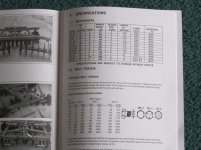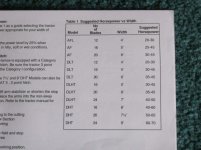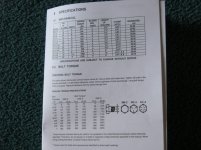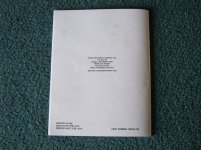jeff9366
Super Star Member
- Joined
- Jan 14, 2011
- Messages
- 12,777
- Tractor
- Kubota Tractor Loader L3560 HST+ ~~~~~~~~~~~~~ 3,700 pounds bare tractor, 5,400 pounds operating weight, 37 horsepower
Tandem Disc Harrows and Pi
Disc Harrow effectiveness is closely related to weight bearing on each disc or pan. The heaviest components, in total, are the Disc Harrow pans.
The weight of each pan is related to its area, its thickness and to its concavity.
The formula for the area of a circle is: A = Pi x R[SUP]2[/SUP]
Here are the approximate areas, in square inches, of common Disc Harrow pans:
Pan Pi R[SUP]2[/SUP] Area
14" 3.14 49 154
16" 3.14 64 201
18" 3.14 81 254
20" 3.14 100 314
22" 3.14 121 380
24" 3.14 144 452
Greater concentricity/dish requires more material so will increase differences above.
Thickness differences would increase differences above, but change would be linear. Larger diameter pans are usually thicker than smaller diameter pans.
Notched pans will be slightly lighter than un-notched pans of the same diameter, thickness, and concavity.
The point of this exercise is to show how rapidly pan weight and therefore pan penetration, increases with diameter.
Tandem Disc Harrows commonly have 16, 20 or 24 pans, so the effect on total Disc Harrow weight increase rapidly with pan diameter.
We should de-emphasize Disc Harrow frame width and introduce the importance pan diameter when making Disc Harrow recommendations, especially when the question involves cutting/penetration.
***COMMENTS PLEASE***
(Will someone explain the method to construct or introduce a data table to T-B-N?)
Last edited:






